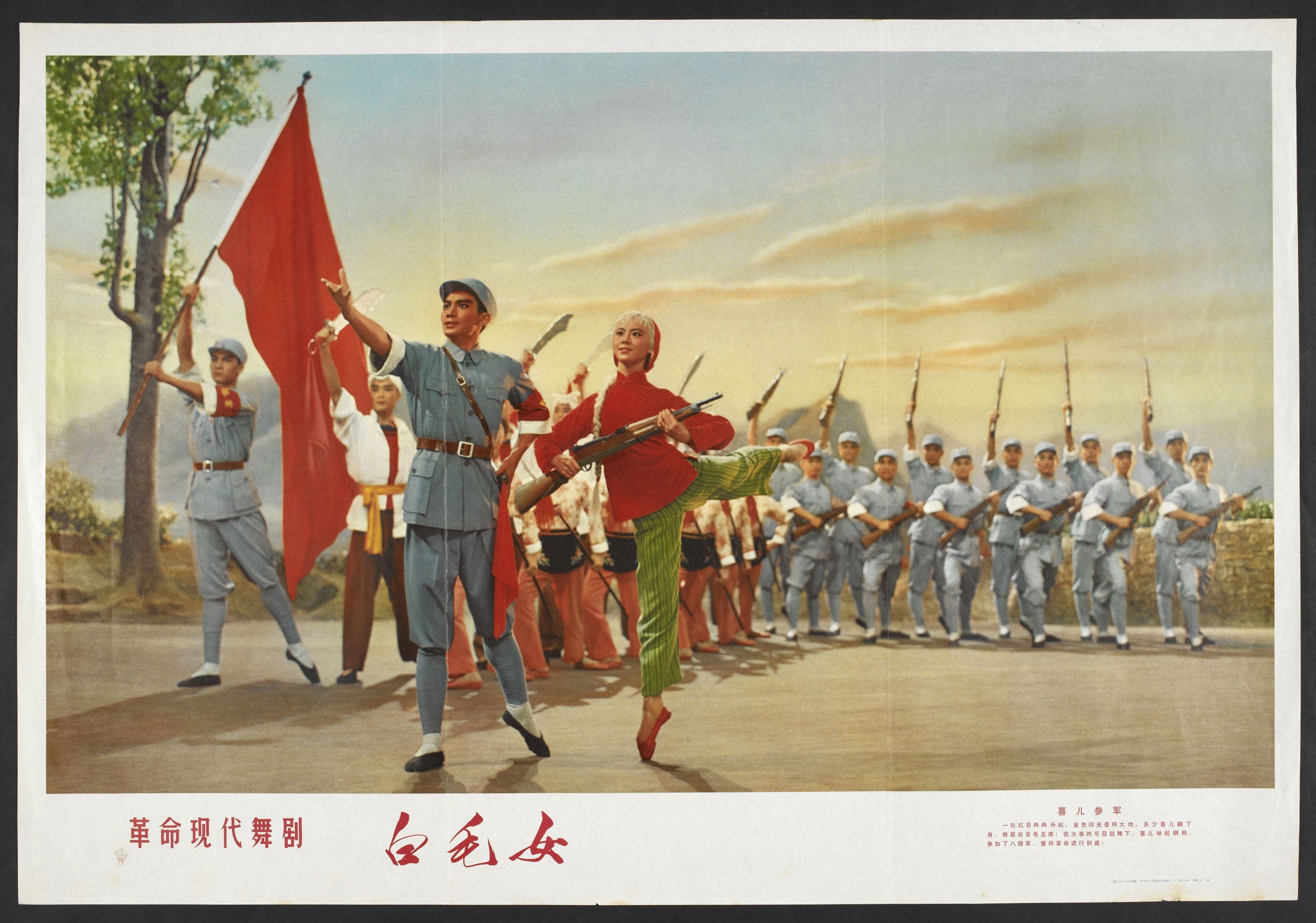Exhibition review: Propaganda: Power and Persuasion (British Library, London)
The battle for hearts and minds, from Alexander to Chairman Mao, is quite hard on the eyes

Your support helps us to tell the story
From reproductive rights to climate change to Big Tech, The Independent is on the ground when the story is developing. Whether it's investigating the financials of Elon Musk's pro-Trump PAC or producing our latest documentary, 'The A Word', which shines a light on the American women fighting for reproductive rights, we know how important it is to parse out the facts from the messaging.
At such a critical moment in US history, we need reporters on the ground. Your donation allows us to keep sending journalists to speak to both sides of the story.
The Independent is trusted by Americans across the entire political spectrum. And unlike many other quality news outlets, we choose not to lock Americans out of our reporting and analysis with paywalls. We believe quality journalism should be available to everyone, paid for by those who can afford it.
Your support makes all the difference.Hear the word "propaganda" and you immediately think of the finger-pointing poster campaigns of the early 20th century, of the enlarged face of Lord Kitchener or Uncle Sam pinning the recruitment-shy with a steely glare. These days we fancy ourselves more resistant to public bullying. The recent "nudge" campaign encouraging us to complete our tax returns on time is said to have produced far better results than threats ever did.
But as a new exhibition at the British Library suggests, propaganda, though often simple enough to spot, is not so easy to define. Can it really be that "everything is propaganda", as the 1950s French political thinker Jacques Driencourt declared? Or is it strictly "biased information", as per the Pocket Oxford Dictionary's edition of 1984? What's certain is that today the boundaries between government information, advertising and PR have shifted, making way for a surprisingly potent new entrant in the arena of public persuasion – social networking.
The very wide range of exhibits here is both a strength and a stumbling block. Between a chunky bronze coin issued in 290BC bearing the head of Alexander the Great portrayed as Heracles, son of Zeus, and the entire wall, near the exit, given over to Twitter responses to last summer's Olympic opening ceremony – itself a vast piece of propaganda for brand UK – is an array of material so multifarious that it's hard to take in half of it on a two-hour visit.
So, if you also opt to plug in to every fascinating archive clip dug out by the British Film Institute (only one set of headphones is supplied for each and you have to wait your turn); if you listen end-to-end to the specially filmed interviews with key commentators such as John Pilger and Alastair Campbell; and if you also sample the two dozen national anthems offered by a menu in the wall, then you'll need to bring a sleeping bag.
More pressingly, though, you need good eyesight. What is it that persuades the designers of exhibitions to present them in semi-darkness? Yes, OK, I think I already know the answer to that: it's essential for the preservation of old works on paper. But given that so many of the pamphlets, books, cartoons, postcards, badges, games and trinkets displayed here require one to read small print or observe fine detail, visitors with anything less than 20/20 vision are at a disadvantage. A set of Czech matchbox covers, illustrating the hazards of drinking, leap out in their bright colours. But I was foxed by a sepia postcard produced in France in 1916, captioned "La Fessée" (The Spanking), since all I could see were a couple of soldiers raising their right hands. It was only on browsing the catalogue at home that I saw they were spanking the derriere of a bent-double German. He'd been invisible in the show's pervading gloom.
Humour, sometimes originally unintended, gives a sprightly feel to a topic that might seem heavy-duty. An American film short from 1949 shows a Brylcreemed politician giving an eager acolyte a lesson in electioneering techniques. Young Chuck is chummily advised of a whole raft of dirty tricks such as name-calling. "Gosh, Sir, I think it will be really interesting to conduct a serious study of propaganda," the wannabe earnestly concludes.
Other pieces show how techniques for winning hearts and minds were developed centuries ago. The grandest is a larger-than-life oil portrait of Napoleon, commissioned when his power was at a low ebb. Pointers indicate the many details that the painter hoped would help turn around his fortunes: the laurel crown (as worn by Roman emperors), the golden bees embroidered on his robe (denoting immortality), and more. Displayed alongside are some of the scurrilous caricatures Napoleon was so keen to counter.
A nice balance is struck between curiosities and the profoundly sinister. Colourful film posters from Chairman Mao's cultural revolution make light of its crimes, while a Nazi film advising in forensic detail how to spot a Jew on the street leaves you wishing it were a clever fake.
To 17 September
Join our commenting forum
Join thought-provoking conversations, follow other Independent readers and see their replies
Comments